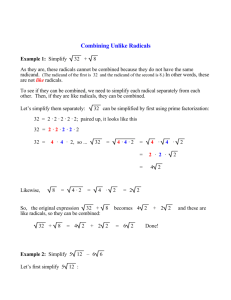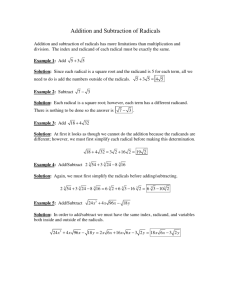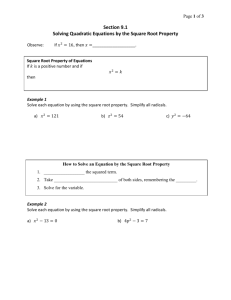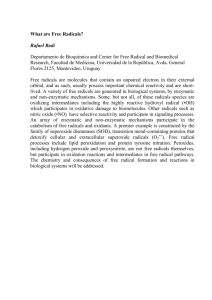Adding and Subtracting Radicals 3√
advertisement
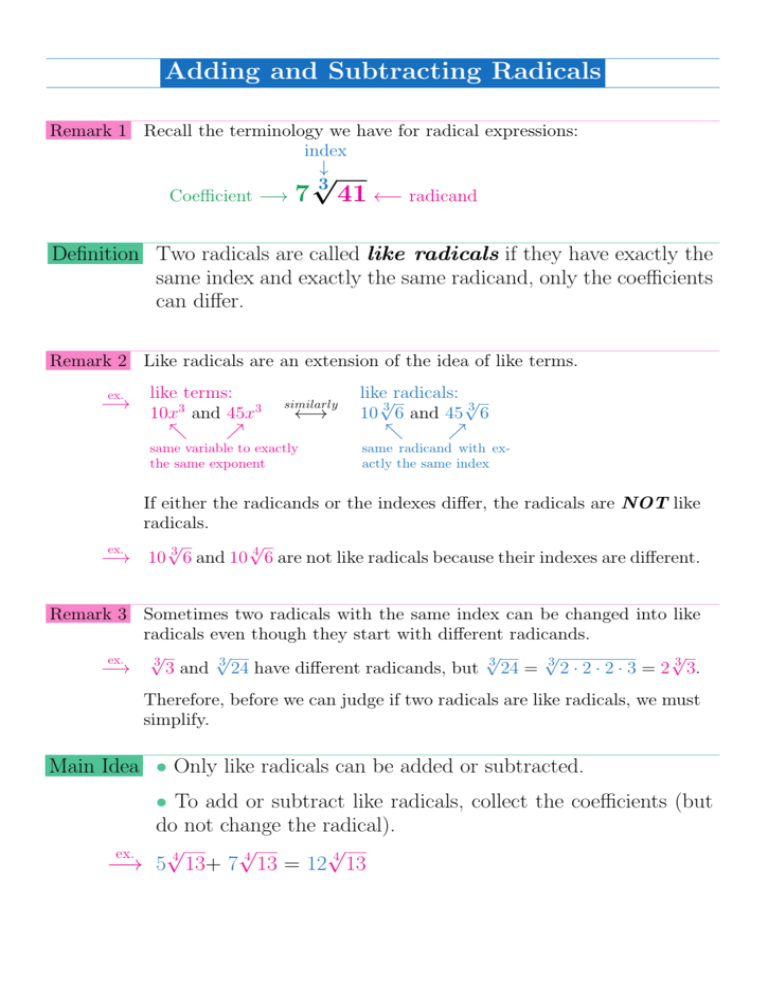
Adding and Subtracting Radicals Remark 1 Recall the terminology we have for radical expressions: index ↓ √ 3 Coefficient −→ 7 41 ←− radicand Definition Two radicals are called like radicals if they have exactly the same index and exactly the same radicand, only the coefficients can differ. Remark 2 Like radicals are an extension of the idea of like terms. ex. −→ like terms: 10x3 and 45x3 ↖ ↗ similarly ←→ same variable to exactly the same exponent like√radicals: √ 10 3 6 and 45 3 6 ↖ ↗ same radicand with exactly the same index If either the radicands or the indexes differ, the radicals are NOT like radicals. √ √ ex. −→ 10 3 6 and 10 4 6 are not like radicals because their indexes are different. Remark 3 Sometimes two radicals with the same index can be changed into like radicals even though they start with different radicands. √ √ √ √ √ ex. −→ 3 3 and 3 24 have different radicands, but 3 24 = 3 2 · 2 · 2 · 3 = 2 3 3. Therefore, before we can judge if two radicals are like radicals, we must simplify. Main Idea • Only like radicals can be added or subtracted. • To add or subtract like radicals, collect the coefficients (but do not change the radical). √ √ √ ex. 4 4 −→ 5 13+ 7 13 = 12 4 13 Example 1 Simplify. Assume all variables represent positive values. √ √ √ √ √ a 7 54 − 3 24 − 6 b 75x2 + 12x2 √ 3 √ 3 c 5x 81x + 6x 24x √ e √ √ 27 3 3 3 − +√ 2 2 4 √ √ d 9 44 − 10 13


